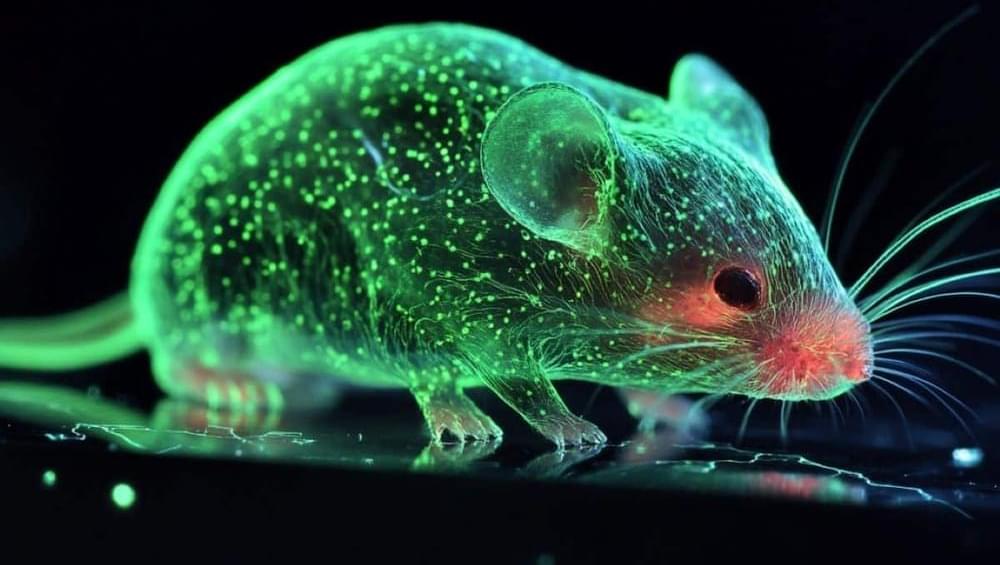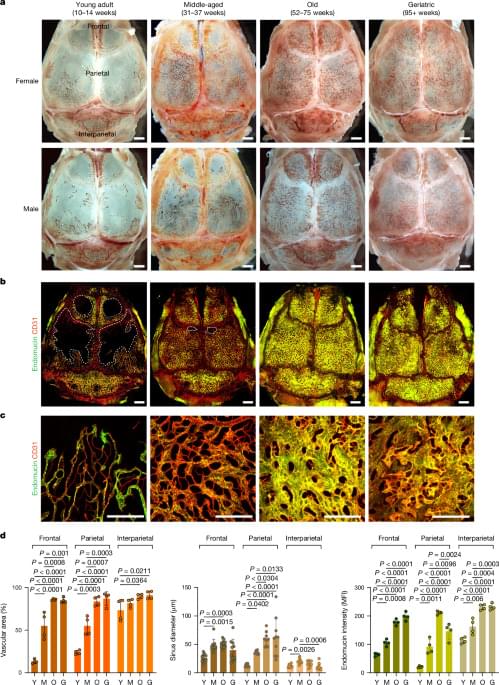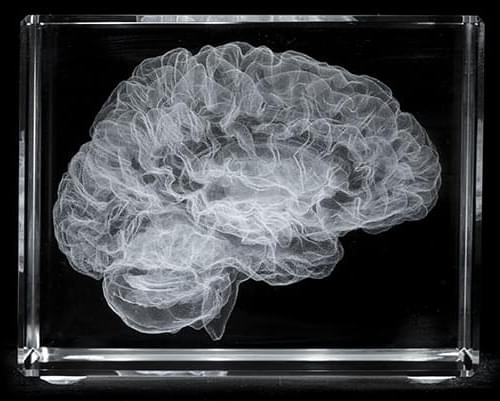Dr. Elana Miller talks about The Longevity Benefits of Acarbose and Rapamycin.
Join our community: https://community.gethealthspan.com/faq.
follow us on twitter: @healthspanmed.
follow us on instagram: @healthspanmed
Dr. Elana Miller talks about The Longevity Benefits of Acarbose and Rapamycin.
Join our community: https://community.gethealthspan.com/faq.
follow us on twitter: @healthspanmed.
follow us on instagram: @healthspanmed
Unlock the Secret to a Longer, Healthier Life: The Power of Inhibiting IL-11
Discover the groundbreaking science behind aging in this video, Mr. Bill Faloon presents:
• The Role of IL-11 in Aging: Learn how this inflammatory cytokine accelerates aging and contributes to age-related diseases.
• The Benefits of Inhibiting IL-11: Discover how reducing IL-11 levels can lead to increased lifespan, improved health, and a more youthful appearance.
• Natural Ways to Inhibit IL-11: Learn about dietary supplements and lifestyle habits that can help you lower IL-11 levels.
• The Future of Anti-Aging Medicine: Explore the latest research on drugs and therapies targeting IL-11 and how they may revolutionize the way we approach aging.
https://www.nature.com/articles/s41586-024-07701-9
Inhibition of IL-11 signalling extends mammalian healthspan and lifespan.
https://www.ncbi.nlm.nih.gov/pmc/articles/PMC9386112/
IL11 stimulates ERK/P90RSK to inhibit LKB1/AMPK and activate mTOR initiating a mesenchymal program in stromal, epithelial, and cancer cells.
https://www.ncbi.nlm.nih.gov/pmc/articles/PMC10754292/
Understanding interleukin 11 as a disease gene and therapeutic target.
Blocking Inflammation Protein Extends Lifespan.
https://www.telegraph.co.uk/news/2024/07/17/scientists-find-…op-cancer/

Summary: Scientists have reprogrammed mouse cells into pluripotent stem cells using a gene from choanoflagellates, single-celled organisms related to animals. This breakthrough demonstrates that key genes driving stem cell formation existed in unicellular ancestors nearly a billion years ago.
The resulting stem cells were used to create a chimeric mouse, showcasing how ancient genetic tools can integrate with modern mammalian biology. This discovery redefines the evolutionary origins of stem cells and may inform regenerative medicine advancements.
Step Into the Future with The Cybernetic Singularity: The Syntellect Emergence 🎧 The groundbreaking third volume of The Cybernetic Theory of Mind series by Alex M Vikoulov is now available as an audiobook!
Ecstadelic Media Group releases a new non-fiction audiobook The Cybernetic Singularity: The Syntellect Emergence, in addition to a previously published Kindle eBook, part of The Cybernetic Theory of Mind series. Written by Alex M. Vikoulov; Narrated by Virtual Voice; Foreword by Antonin Tuynman, PhD; Format: Audible audiobook (Press Release, Burlingame, CA, USA, November 16, 2024 09.23 AM PST)
The Cybernetic Singularity: The Syntellect Emergence is a visionary exploration of humanity’s impending transition into a post-biological state of existence, where artificial intelligence, advanced cybernetics, and collective intelligence converge to form a unified Global Mind. As the third installment in The Cybernetic Theory of Mind series, this book delves into the transformative potential of AI and the emergence of hyperconnected “infomorphs” — substrate-independent minds transcending biological limitations. It examines the profound philosophical, technological, and existential implications of this evolutionary leap, which may redefine what it means to be human. The book also introduces key concepts like Cybernetic Immortality and Experiential Realism, suggesting how we might engineer a future of infinite creativity and bliss.
With the Syntellect Hypothesis as its foundation, The Cybernetic Singularity presents a roadmap to the ultimate phase transition of civilization — the awakening of a universal consciousness network capable of synthesizing knowledge, experience, and purpose at unimaginable scales. From the rise of transhumanism to the development of a planetary superorganism, the narrative connects cutting-edge scientific insights with metaphysical musings on the nature of reality. Opening with Norbert Wiener’s quote, “The world of the future will be an even more demanding struggle against the limitations of our intelligence,” the book invites readers to contemplate their role in this grand cosmic drama. Whether you are a technophile, philosopher, or futurist, this volume is an essential guide to understanding and embracing the dawn of the Syntellect Emergence.
Join us on Patreon! https://www.patreon.com/MichaelLustgartenPhDDiscount Links/Affiliates: Blood testing (where I get my labs): https://www.ultalabtests.com/…

OneSkin, founded by Brazilian PhD scientists in 2016, reports that it has now closed a Series A funding round led by Selva Ventures, together with contributions from PLUS Capital, Unilever Ventures, Able Partners, SOSV, and Meta Planet. This brings the accumulated capital of the firm to 20 million US dollars.
The goal of the OneSkin team is the research and development of topical treatments that promote skin longevity. The brand’s efforts have led to the development of the peptide OS-01, which is claimed to reverse the aging of the skin by preventing the accumulation of “old”, non-dividing senescent cells, as well as shield skin cells from DNA damage. OS-01 is already available on the market in several different products offered by the company.
Senescent cells have been the focus of a significant amount of biogerontological research in recent years. Scientists claim that every cell in the human body has a limited capacity for division, governed by genetic factors. When the cells reach the point in their lifecycle where their ability to divide is permanently halted, they remain in a minimally-functional state in the tissue types they inhabit.


Summary: Adolescents are known for making less optimal, noisy decisions, but a recent study reveals that these tendencies decrease with age and are linked to improvements in complex decision-making skills. Researchers found that decision noise, or variability in choices, mediates age-related gains in goal-directed behaviors and adaptability.
Adolescents may rely on less efficient strategies due to limited cognitive resources, which makes them more susceptible to emotional and motivational influences. These findings shed light on the computational mechanisms behind developmental shifts in decision-making and open avenues for understanding neurodevelopmental disorders.

Researchers from Johns Hopkins University have recently discovered several prominent biomarkers that allow for the early diagnosis of dementia and/or mild cognitive impairment (MCI). In a recently published article, evidence has been presented that patients with diabetes type 2 exhibited more changes to their brains than healthy controls, including the shrinking of certain brain areas. These changes occurred earlier in life, and some of the patients developed MCI sooner than others.
The Older Controls at Risk for Dementia (BIOCARD) study is a long-term trial which has been conducted for the past 27 years with the goal of determining how medical conditions and other factors might be impacting cognitive function and perhaps even affecting the biological age of the brain as a whole. BIOCARD was originally a National Institutes of Health initiative, which began in 1995 and later continued at Johns Hopkins University from 2015 to 2023. The cohort consisted of 185 participants, with an average age of 55 years and normal cognitive function.
The trial subjects received routine brain scans and cerebrospinal fluid (CSF) tests for 20 years, in order to measure changes in brain structures and levels of proteins associated with Alzheimer’s disease. Scientists have been increasingly using CSF to attempt to uncover early signs of neurodegenerative disease, since it is a minimally-invasive procedure which is inexpensive and widely available.
Aging is characterized by a gradual decline in function, partly due to accumulated molecular damage. Human skin undergoes both chronological aging and environmental degradation, particularly UV-induced photoaging. Detrimental structural and physiological changes caused by aging include epidermal thinning due to stem cell depletion and dermal atrophy associated with decreased collagen production. Here, we present a comprehensive single-cell atlas of skin aging, analyzing samples from young, middle-aged, and elderly individuals, including both sun-exposed and sun-protected areas. This atlas reveals age-related cellular composition and function changes across various skin cell types, including epidermal stem cells, fibroblasts, hair follicles, and endothelial cells. Using our atlas, we have identified basal stem cells as a highly variable population across aging, more so than other skin cell populations such as fibroblasts. In basal stem cells, we identified ATF3 as a novel regulator of skin aging. ATF3 is a transcriptional factor for genes involved in the aging process, with its expression reduced by 20% during aging. Based on this discovery, we have developed an innovative mRNA-based treatment to mitigate the effects of skin aging. Cell senescence decreased 25% in skin cells treated with ATF3 mRNA, and we observed an over 20% increase in proliferation in treated basal stem cells. Importantly, we also found crosstalk between keratinocytes and fibroblasts as a critical component of therapeutic interventions, with ATF3 rescue of basal cells significantly enhancing fibroblast collagen production by approximately 200%. We conclude that ATF3-targeted mRNA treatment effectively reverses the effects of skin aging by modulating specific cellular mechanisms, offering a novel, targeted approach to human skin rejuvenation.
The authors have declared no competing interest.